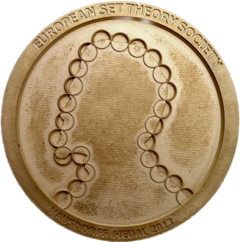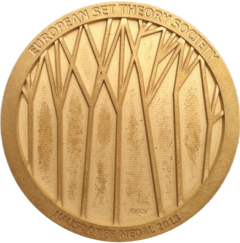The Hausdorff medal is awarded biennially (i.e. once every two years) for the most influential work in set theory published in the five years preceding the medal.
The Hausdorff medal was designed by María Clara Cortés, professor at the Universidad Nacional de Colombia.
5th Hausdorff Medal 2022
The Hausdorff committee unanimously recommended that the 5th Hausdorff Medal 2022 be awarded to David Aspero (University of East Anglia) and Ralf Schindler (University of Münster). The ceremony took place at the European Set Theory Conference in Turin on 29 August 2022.
The medal was awarded for their positive solution to the long standing conjecture. Their proof showed that MM++, a strong form of Martin’s Maximum, implies Woodin’s Axiom (*). This result amalgamates two approaches to understanding the theory of sets of size less than the second uncountable cardinal. The outcome shows that determinacy approaches are intimately connected with those of forcing axioms, and unifies our two most important ways of thinking about sets in this area.
The committee therefore cited the following paper for its fundamental contribution:
– David Asperó and Ralf Schindler: Martin’s Maximum++ implies Woodin’s Axiom (*), Annals of Mathematics 193 (3) (2021), pp. 793-835.
Philip Welch, President of the European Set Theory Society
The ceremony on 29th August, 2022 included a laudatio by Grigor Sargsyan and talks by the medal winners:
– Video of the ceremony
– Laudatio
– Slides of Ralf Schindler’s talk
– Slides of David Aspero’s talk



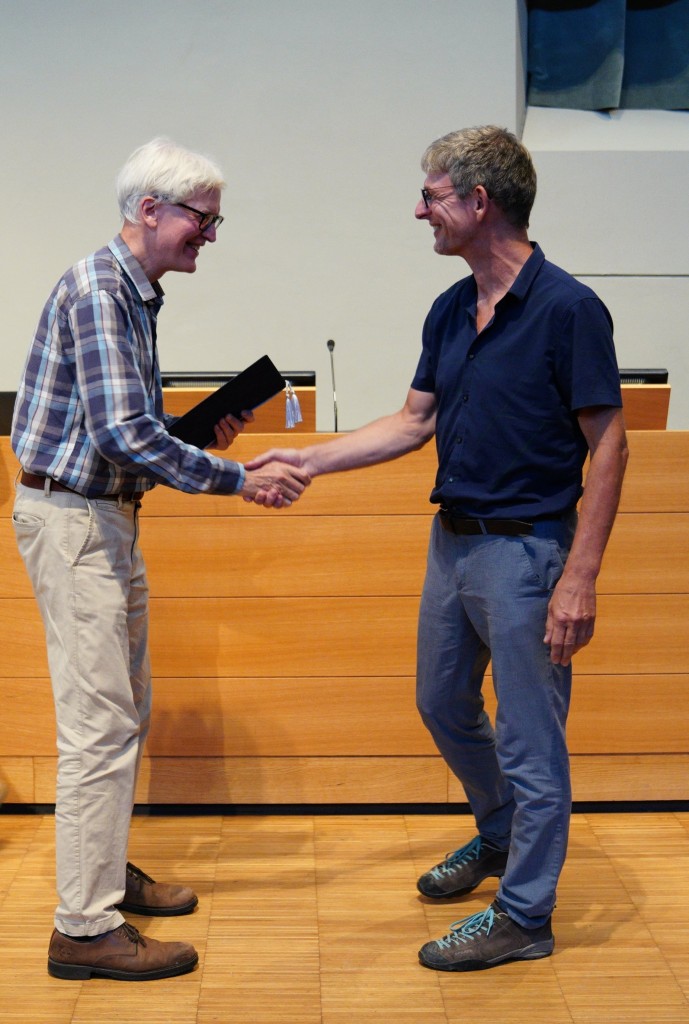
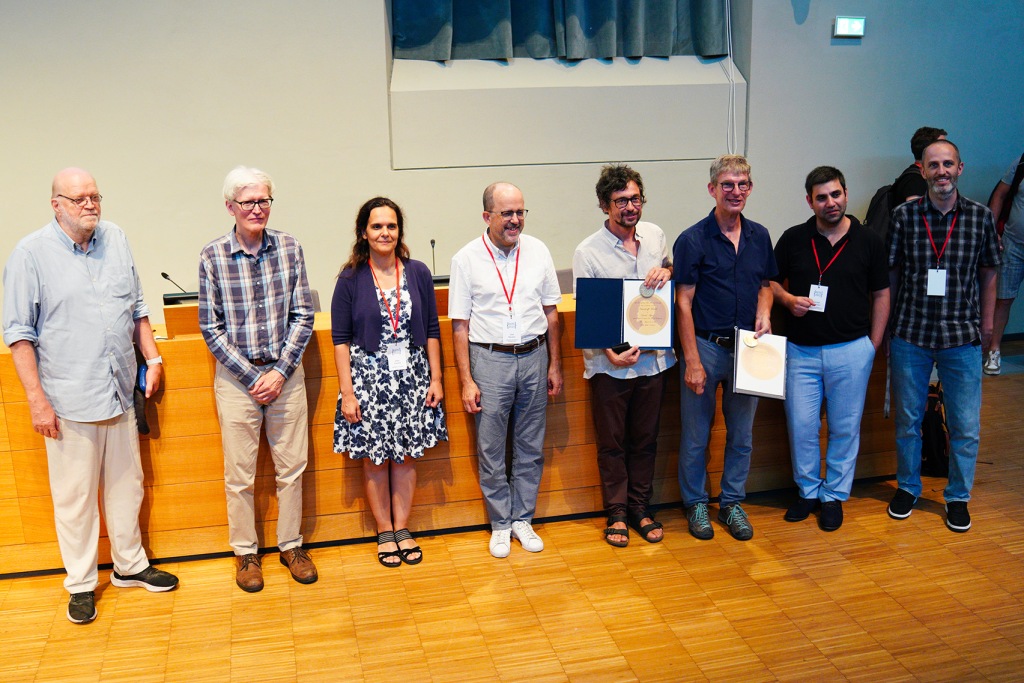
4th Hausdorff Medal 2019
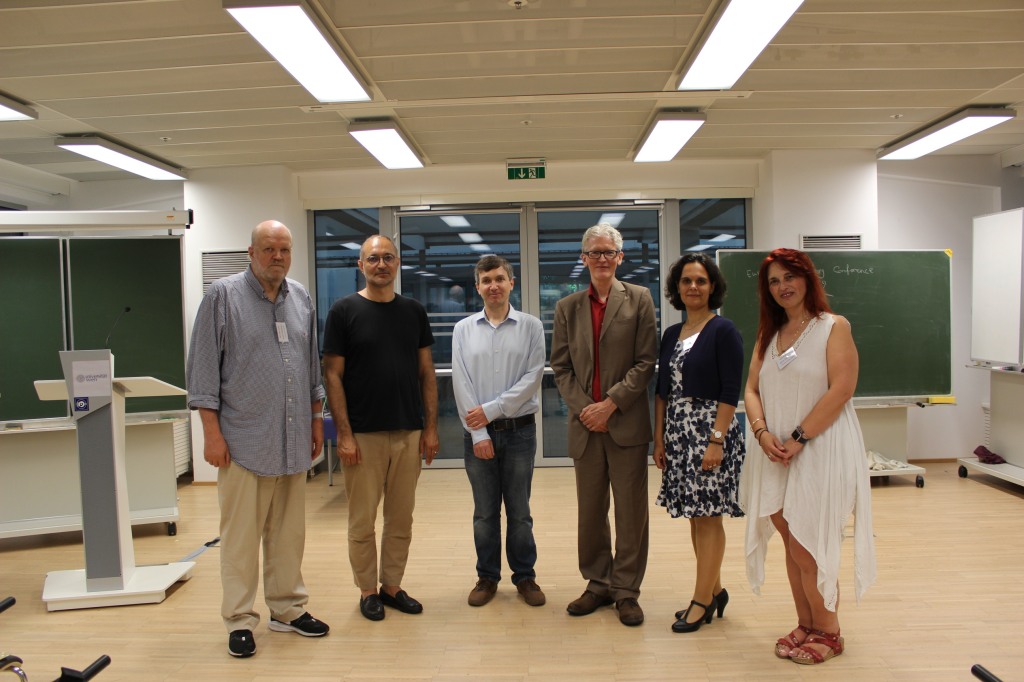
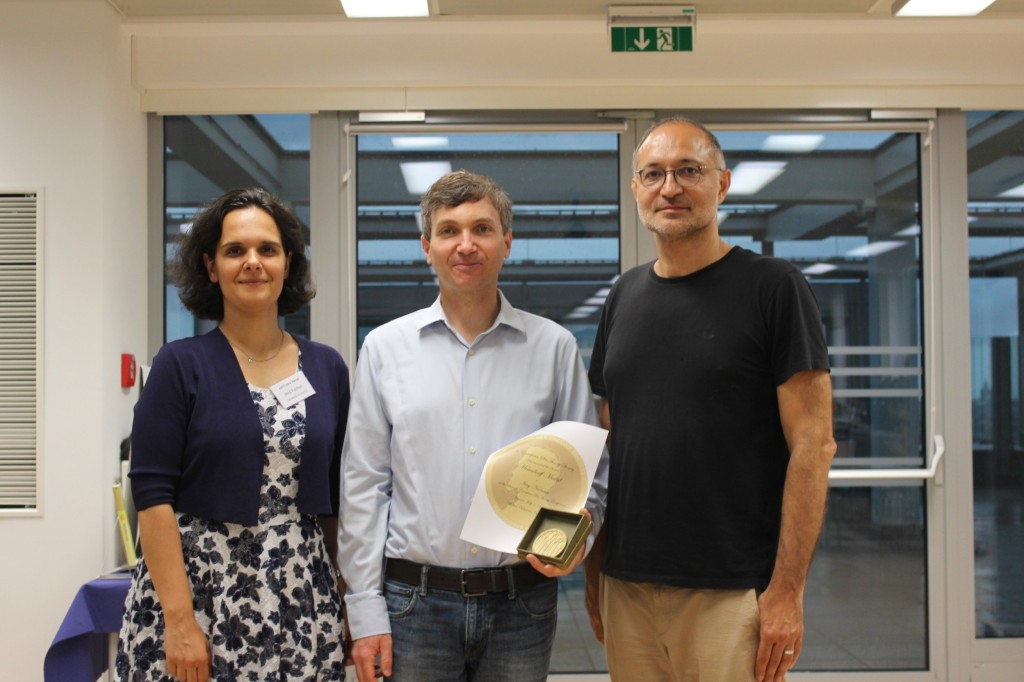


The 4th Hausdorff Medal 2019 for the most influential work in set theory
in the previous 5 years was awarded to Itay Neeman (UCLA) at the European Set Theory Conference, the biennial conference of the ESTS, in Vienna on 1 July 2019.
The medal was awarded for his work on the new method of iterating forcing using side conditions and the tree property. The committee cited the following papers for their fundamental contributions and for opening up the new directions of study:
– Forcing with sequences of models of two types, Notre Dame J. Formal
Logic, vol. 55 (2014), pp. 265–298,
– Two applications of finite side conditions at ω2. Arch. Math. Logic 56
(2017), no. 7-8, 983–1036
– The tree property up to ℵω+1. J. Symb. Log. 79 (2014), no. 2,
429–459.
3rd Hausdorff Medal 2017
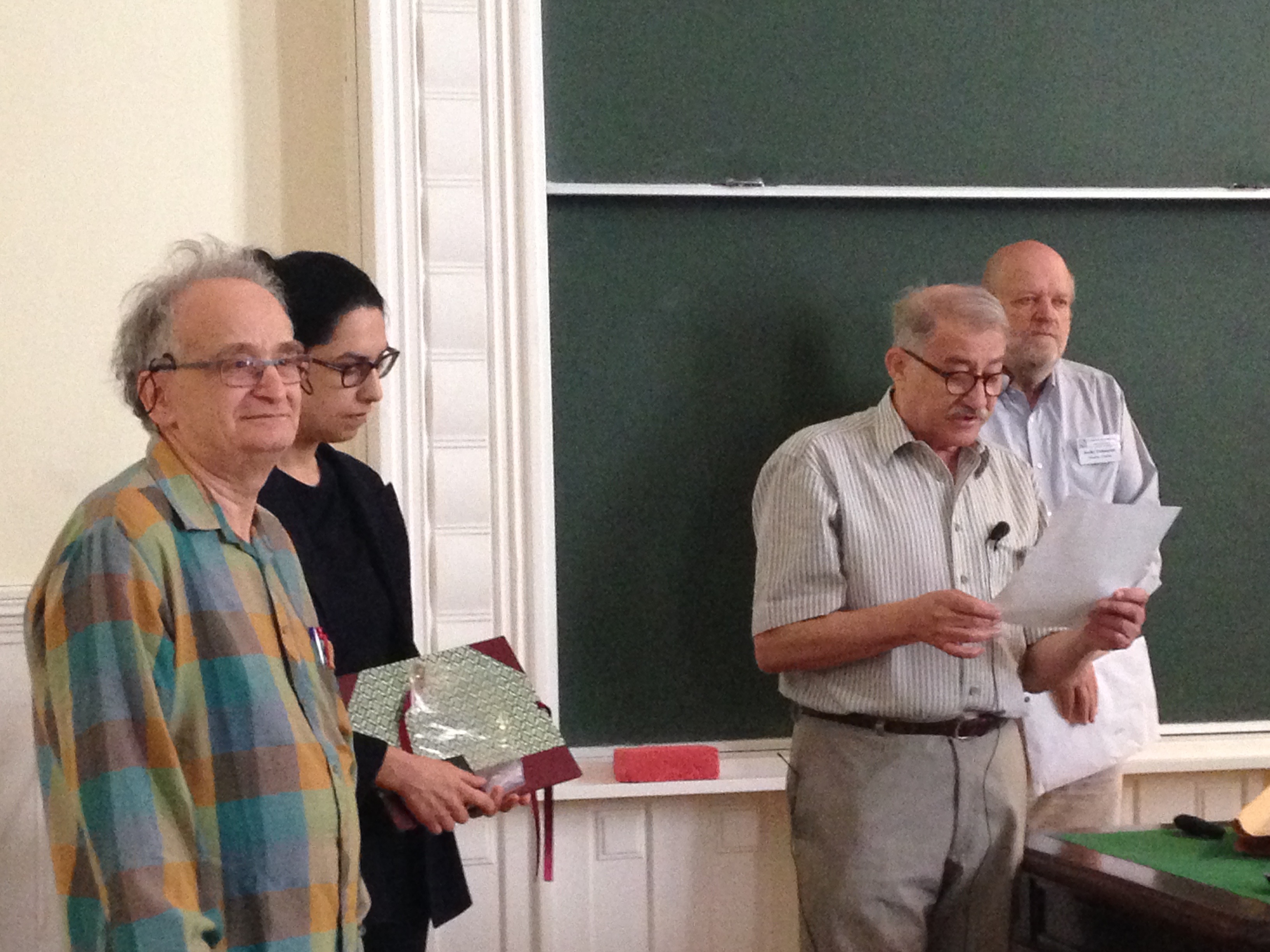
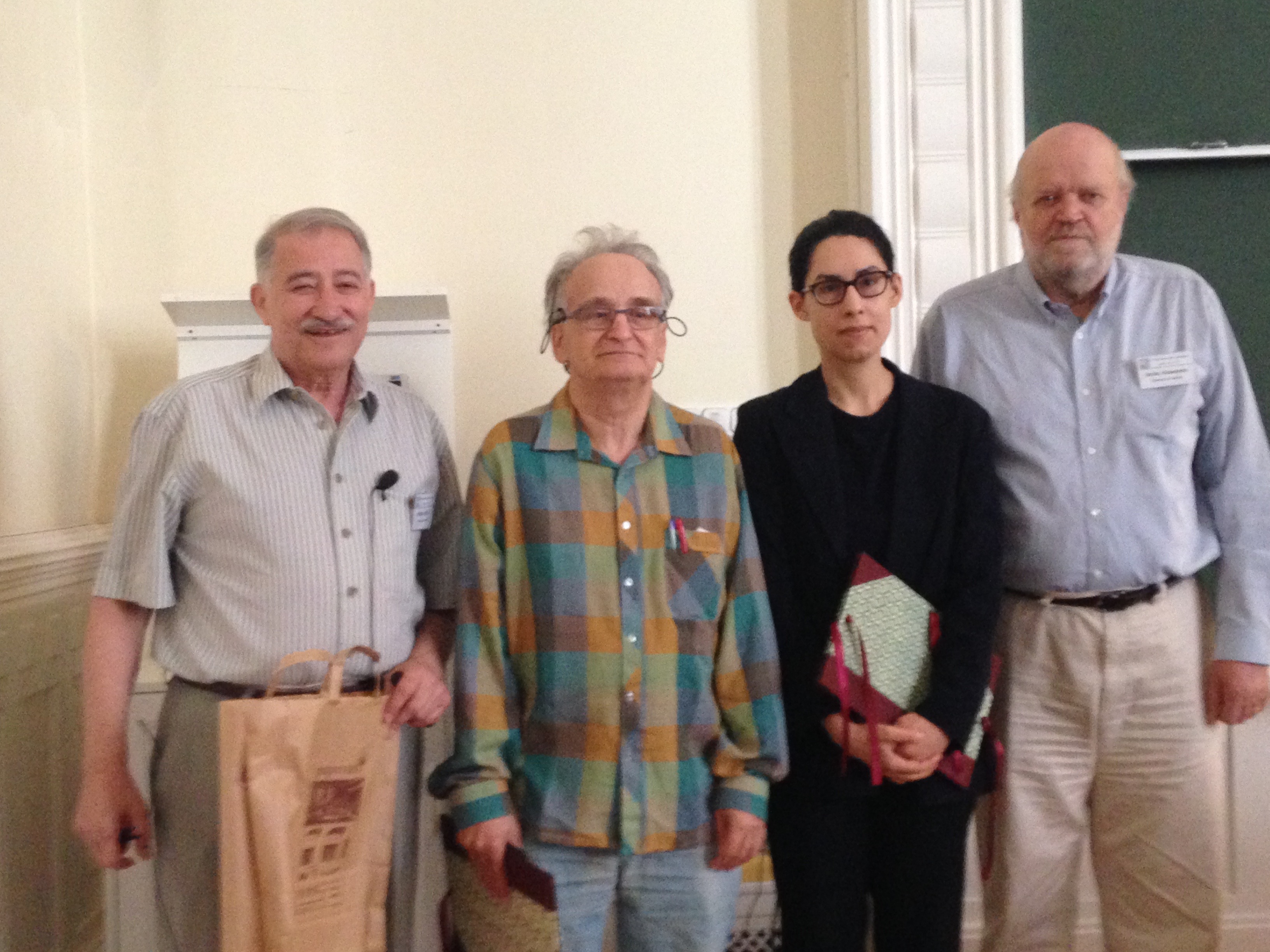
The third Hausdorff medal was awarded to Maryanthe Malliaris and Saharon Shelah for their work outlined in the paper:
General topology meets model theory, on p and t. Proc. Natl. Acad. Sci. USA 110 (2013), no. 33, 13300-13305,
and then expounded in the detailed, 60 page long version:
Cofinality spectrum theorems in model theory, set theory, and general topology. J. Amer. Math. Soc. 29 (2016), no. 1, 237-297.
2nd Hausdorff Medal 2015
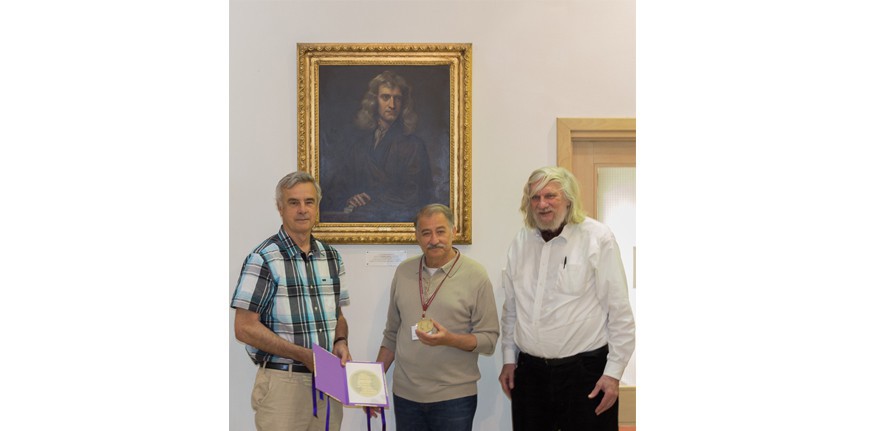
The second Hausdorff medal was awarded to Ronald Jensen and John Steel at the fifth European Set Theory Conference in Cambridge, UK on August 26, 2015.
The medal was awarded to the paper
K without the measurable, The Journal of Symbolic Logic, Volume 78, Issue 3 (2013), pp.708-734
by Ronald Jensen and John Steel.
1st Hausdorff Medal 2013
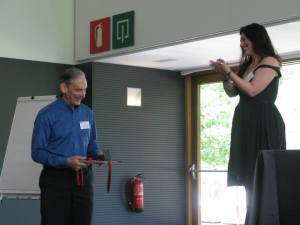
The first Hausdorff medal was awarded to Hugh Woodin at the fourth European Set Theory Conference in Mon St Benet, Spain on July 15, 2013.
The medal medal was awarded to the papers
Suitable extender models I. J. Math. Log. 10 (2010), no. 1-2, pp.101–339
Suitable extender models II: beyond omega-huge. J. Math. Log. 11 (2011), no. 2, pp.115–436
by W. Hugh Woodin, where the author made a major contribution to the inner model theory of supercompact cardinals and beyond.
